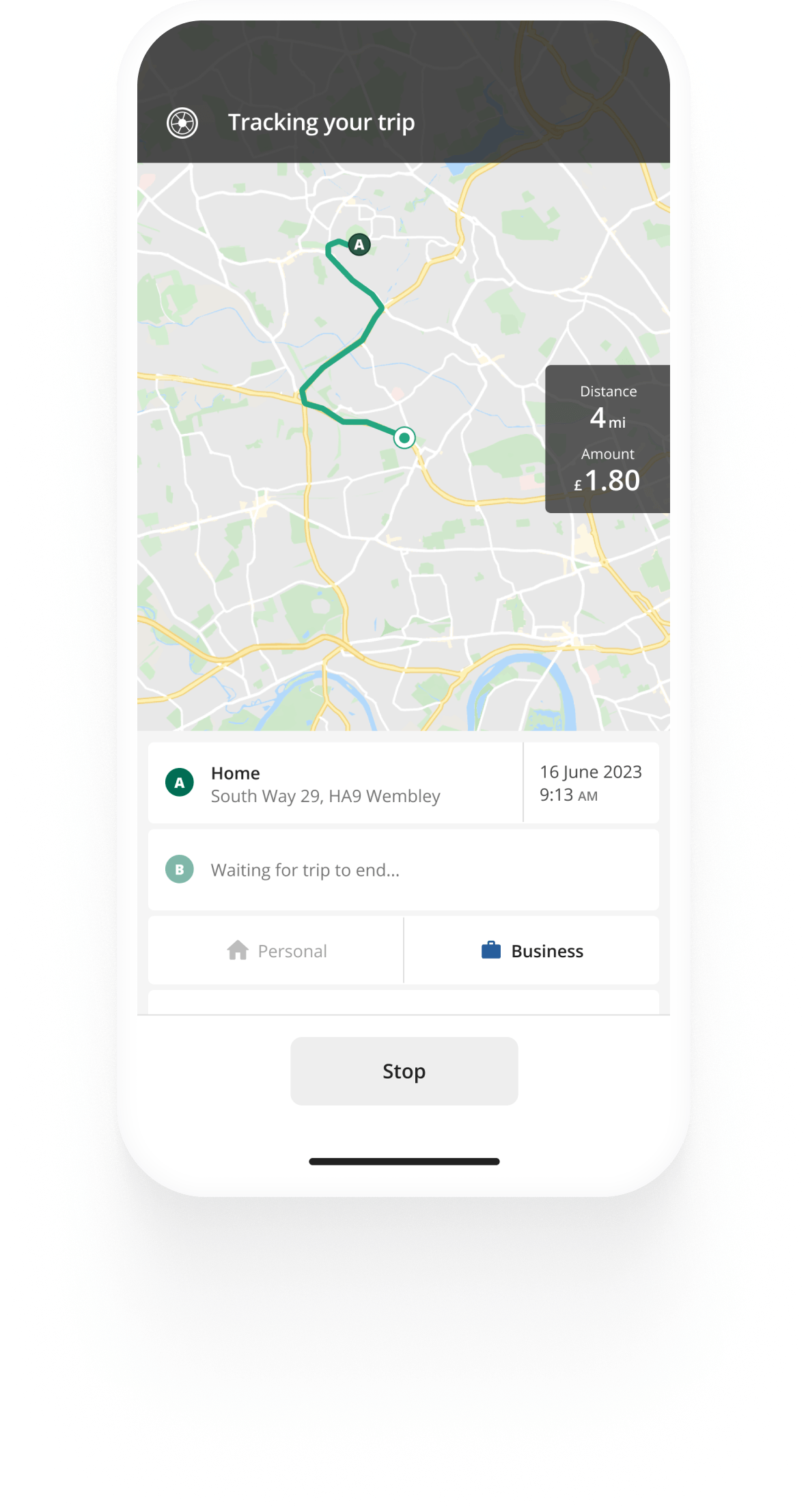Track mileage automatically
Get startedMileage tax relief
In this article
Mileage tax relief is a deduction you can claim on your yearly tax return for any mileage you’ve driven for business purposes. If you use your personal vehicle for business-related driving, you will be eligible to claim mileage tax relief.
You should log your business-related driving to substantiate your mileage relief claim. The Driversnote mileage tracker app will record your trips automatically and you can generate HMRC-compliant reports of your miles.
Rules on claiming mileage tax relief
Learn all the ins and outs of claiming mileage tax relief depending on your situation in our dedicated article.
If your employer reimburses you for your business mileage at the approved HMRC mileage rates, you will not be able to claim mileage tax relief.
Your tax relief on mileage is based on the HMRC approved mileage rates. The rates are:
- 45p per business mile for cars and vans, up to 10,000 miles
- 25p per mile for over 10,000 miles for cars and vans
- 24p per business mile for motorcycles
- 20p per business mile for bicycles
If you are reimbursed by your employer at lower rates than the HMRC approved, you will be able to claim the difference as tax relief on mileage. For example, if you receive 20p per mile, instead of the standard 45p, you will be eligible to claim mileage tax relief at 25p per mile.
The approved HMRC rates have been unchanged for the past years, so you can use these rates to claim mileage for the previous year too. Calculate the tax relief on mileage by multiplying all business miles you’ve driven throughout the year by the corresponding rates.


Mileage tracking made easy
Trusted by millions of drivers
Automate your mileage log Automate your mileage log

Automatic mileage tracking and HMRC-compliant reporting.
Get started for free Get started for freeHow to claim mileage tax relief
You can claim tax relief on mileage each year on Self Assessment as self-employed, or through the P87 tax form as an employed individual on your tax return. You will need to have records showing your mileage for the year and clear calculations of how you worked out the relief you are claiming.
In order to provide compliant records for the tax relief on mileage, you will have to log the following information throughout the year for each journey:
- The date
- The start and end addresses, including postcodes
- The number of miles you’ve driven
- How much (if any) mileage allowance you have received from your employer.
FAQ

Tired of logging mileage by hand?
Effortless. HMRC-compliant. Liberating.
Related posts
Free mileage log book template
27 March 2025 - 2 min read
Whether you're an employee or a business owner, it's crucial to keep good mileage records in a mileage log book.
HMRC Mileage Guide
13 February 2025 - 5 min read
Welcome to our guide on mileage claims and reimbursement in the UK. This guide will walk you through the rules that apply to your situation.
Free mileage log book template
27 March 2025 - 2 min read
Whether you're an employee or a business owner, it's crucial to keep good mileage records in a mileage log book.
.svg)
